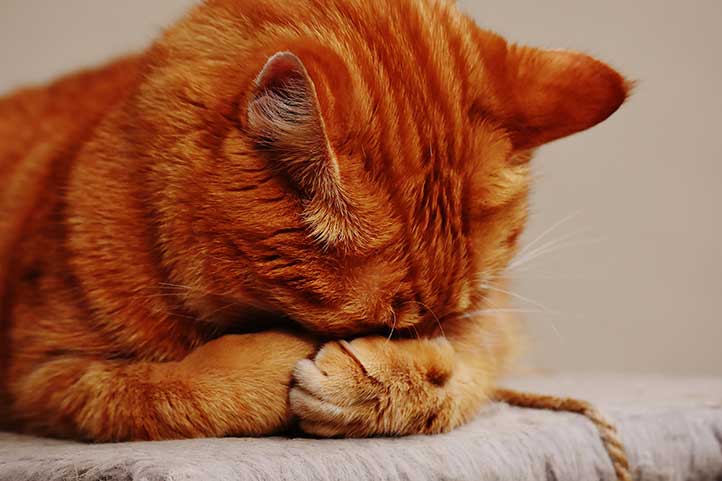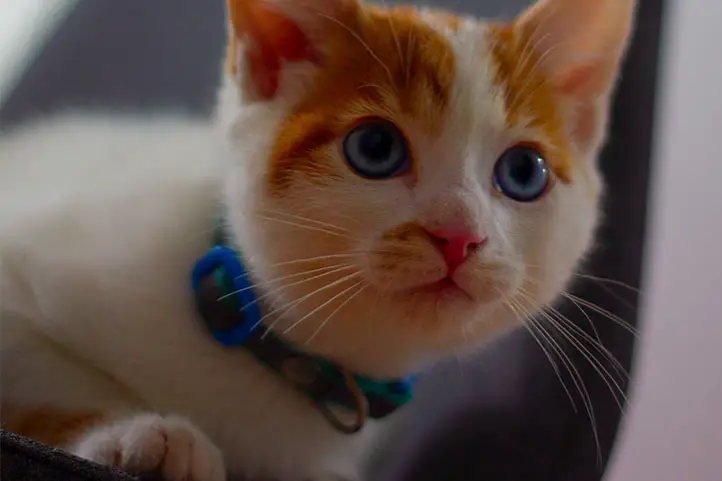Translated by Nick R
Thanks to animal cartoons, we have assumed that it is normal for a cat to vomit hairballs as if it were part of their nature and there is nothing wrong with it.
However, this is not exactly true, and your cat vomiting hairballs may mean that your pet is sick. Keep reading to learn 5 reasons for this and 4 ways to prevent it.
Table of Contents
Why does your cat vomit hairballs?
Several factors have to be considered to understand why a cat would vomit hairballs. In general, it’s because when grooming, they swallow dead hair, but the grooming has to be accompanied by something else to create “the perfect environment” for hairballs to form in the stomach.
Grooming
Cats are extremely clean, they take very good care of their own grooming and spend their days in this, licking their fur and swallowing the dead hair, which can accumulate in the stomach to form a hairball.
However, this doesn’t happen to all cats, even if they groom themselves as well as anyone else. Therefore, there are certain things to keep in mind that predispose your pet to suffer from hairballs.
Diseases
If your cat suffers from any dermatological disease that causes increased hair loss, he is likely to be more exposed to the formation of a hairball in the stomach.
Likewise, it may be that your cat is grooming himself more than usual due to flea or insect bites, which cause him to lick more often trying to relieve the itching.
On the other hand, hairballs can also be caused by digestive disorders such as inflammations that alter the digestive process and cause the hairs not to be easily evacuated in the feces, but to clump together in the stomach.
Molting
As the name says, shedding is the renewal of the cat’s coat that occurs twice a year, in spring and autumn, due to temperature changes. Therefore, at these times, your pet loses a lot of hair and is exposed to swallowing a lot of dead hair while grooming.
Poor nutrition
If your cat’s diet is not providing the vitamins, fiber, fat, or protein he needs, he is likely to have a weak and brittle coat.
And if this is the case, the fur will fall out more easily and in greater quantity, so he will swallow a lot when grooming himself. Besides, if he has a bad diet, his digestive process will not be adequate either, so the fur will start to mix with the food and will not be evacuated with feces. Cat breeds are predisposed to have hairballs
Clearly, cat breeds with long hair are more predisposed to suffer at some point in their lives from hairball accumulation. Some of these breeds are:
- Persian.
- Angora.
- Norwegian Forest.
- Sacred Birman cat.
- Somali.
- Himalayan.
- Balinese.
- Ragdoll.
Are hairballs dangerous?
Hairballs can grow very large inside the cat’s stomach (more than 12 cm in diameter). If not treated urgently, this can even lead to the death of the cat, as it creates a blockage in the intestinal tract; emergency surgery is required, especially if the hairball has reached a very large size.
In fact, in Spain there is now a Day Against Cat Hairballs (April 24) to make people aware that this is not normal and can pose a great danger to felines.
How to prevent your cat from accumulating hairballs
1. Brushing
Brush your cat daily to remove dead hair so your cat doesn’t swallow it when he grooms himself. How much time you spend each day will depend on whether your cat has a long or short coat.
Ideally, you should brush your cat until there is no more hair on the brush.
You can also read this article on improving your cat’s hygiene which will guide you in everything you need to know.
2. Feeding
As I said before, a poor diet can lead to hair loss and/or a brittle coat, which encourages hair accumulation in the stomach.
So, give your cat quality food, or consider a more natural and planned diet such as BARF. You must consult a veterinary professional before making any change to your pet’s food.
You can also read our blog What is the best food for your cat to make sure your pet is getting the right nutrition.
3. Malt
You can get this product at pet stores or veterinarians. It specializes in preventing the accumulation of hairballs as it improves digestion and, therefore, helps to evacuate the hair that the cat has consumed through the feces.
Malt is quite easy to administer, it has a toothpaste-like packaging and its texture is like toothpaste. You can just approach your cat and squeeze the paste so that it comes out and he can lick it, as many cats love it.
If your cat doesn’t like it, put some in the corners of his mouth so he has to lick and swallow it.
4. Veterinarian
If your cat vomits hairballs very often, and apart from this has other symptoms such as diarrhea, lack of appetite, fever or apathy, you need to go immediately to the veterinarian because your cat may need an emergency intervention to remove the hairball from his stomach.


